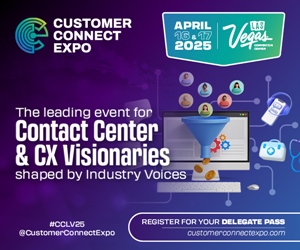
Small CX teams don’t need to match big companies’ resources; AI lets them focus on what they do best by solving problems faster and building genuine connections with customers.
Bigger companies have historically provided better customer experiences (CX) by staffing 24/7 agents and analytics teams to help them improve. Advancements in today’s artificial intelligence (AI) tools have leveled the playing field. Small companies don’t need more humans to provide those same experiences.
Instead, they can use AI to reduce their workload, take over administrative tasks, and analyze interactions autonomously. At the same time, human agents focus on providing the personalized experiences customers expect from smaller businesses. This guide covers how small CX teams can use AI to rise above their limitations and compete at a level big companies can’t match.
AI is Dramatically Reducing Workload
Human agents don’t need to spend their days walking customers through the same password reset instructions, tagging tickets to keep things organized, or hunting through systems for the right information. Instead, AI can reasonably and accurately take over these time-consuming responsibilities without too much human oversight.
1. Deflecting Repetitive Issues
A small CX team might receive hundreds of inquiries a day asking common questions like, “Where’s my shipment?” “How do I unlock my account?” or “How many credits do I have left?” For repetitive issues like these, AI should be the first line of defense and given the opportunity to deflect them completely.
Yazio, a fitness and nutrition app with a CX team of just 5 to 8 agents, was facing a rising ticket volume that outpaced its ability to hire. It was able to keep up with the massive scale using Forethought Solve, the industry’s leading AI-powered automated agent.
Their team—which also manages help center content, templates, and internal resources—needed to remove a lot of work from their plates. Yazio introduced a zero-touch customer service tier, which was addressed entirely by Max, their AI-powered automated agent. Max reduced the need for agents to address simple issues like how to use their app.

The team felt a burden lift immediately—in the first month, Max (powered by Solve) deflected 60% of tickets. As users grew comfortable with Max and its workflows improved, Yazio saved 80% of tickets deflected within six months, all while maintaining a 4.0 out of 5.0 CSAT score.
“We would drown in tickets if we didn’t have Solve’s 80% deflection,” Trojan said. “We’d have to hire three full-time agents focused on customer support to maintain our team’s current workload if we were to try to replace it with human support.” – Michael Trojan, User Success Specialist (AI), YAZIO
Despite a 40% growth in ticket volume, Yazio’s team didn’t need to scale their headcount to match that of larger competitors. If they had tried, they estimate they would have needed three more full-time agents just to keep up.
2. Labeling and Sorting Issues Autonomously
Some CX teams that have been burned before hesitating to trust automated tools for routing and labeling tickets. When tools misclassify tickets, they create chaos that takes longer to fix than doing the work manually. Instead of saving time, these systems often add frustration and disrupt workflows.
AI-powered routing tools don’t make the mistakes that decision-tree-based tools of the past have. Instead, Natural Language Understanding (NLU) means that AI-powered tools don’t rely on basic keyword matching—they consider tone, intent, and context. For example, it might distinguish between a “High Priority” and “Low Priority” damaged product issue based on subtle differences in customer tone and route each ticket to the most qualified agent or team.

Larger companies might use its workforce to do the same thing, but it costs them greatly in resources and efficiency. Not only do they have to hire, train, and maintain a routing team, but they also have to staff the resources to address those tickets quickly.
iFIT, a global fitness subscription company, used Forethought Triage to overhaul its ticket routing process, with ticket predictions being 82% accurate . This allowed their human agents to match the speed and quality of service associated with larger competitors while their team remained leaner and more agile.
3. Helping Agents Find Information Quickly
In larger companies, agents can rely on entire teams to curate and organize resources. That responsibility often falls on the agents themselves in small teams, who waste time searching through disconnected systems or outdated documents. AI-powered assistants for small teams can act like those dedicated teams in larger companies and instantly surface the most relevant knowledge base articles, historical cases, or even pre-written responses directly in the help desk.
Beeline, a leader in extended workforce management, had to onboard many new agents following an acquisition. Their slow ramp times impacted customer satisfaction, so they used Forethought Assist, an AI-powered assistant, to provide relevant knowledge articles, similar past tickets, and personalized macros within their help desk. Assist led to a 52.2% reduction in time to resolution , a 24.3% decrease in first response times, and a 32% reduction in time between case responses as Beeline grew.
What sets Assist apart is its ability to dynamically adjust to each ticket’s context. Agents can customize AI-suggested responses and change the tone or language to fit the situation so that replies are accurate and empathetic. This not only reduces handling times but also helps small teams meet SLAs without sacrificing the personal touch that customers expect from small teams.

For example, suppose an agent is working on a ticket about a product defect. In that case, Assist might pull up similar resolved cases, documentation on the defect, and a pre-written macro for issuing refunds. This eliminates the time spent switching between systems and manually searching for information.
AI is Working with Humans to Create Personalized Experiences
AI should always work alongside a human team, not replace it. A balance of both ensures customers get the personal touch they expect, while AI helps support teams become faster and more efficient. In practice, this partnership is about playing to strengths — AI handles repetitive tasks or gathers key details, while human agents step in for complex, sensitive, or high-value interactions.
While you’re figuring out what those strengths look like for your company, experienced agents will be critical in identifying which tickets are suited for automation and which require human oversight. For instance, AI could probably handle high-volume tasks based on FAQs, but humans might better resolve tickets involving billing disputes, legal questions, or very angry customers. Even in those cases, AI could be the first line of defense, necessary information collecting so tickets are fully prepared before they’re handed off to an agent.
You could also integrate AI with tools like APIs in existing systems so small CX teams can automate many backend tasks that previously required manual effort. To get the most from their tools, small CX teams should regularly review which tasks are automated and which require human oversight.
AI is Improving Efficiency Without Sacrificing Satisfaction
Small CX teams often face a tough tradeoff between keeping costs low and maintaining customer satisfaction. If your resources are limited, it can feel impossible to meet rising expectations without sacrificing one for the other. AI tools eliminate this tradeoff. Many Forethought customers have reported reduced costs per ticket and better SLA after implementing our tools. They’ve saved hours per agent while maintaining customer satisfaction.
But the benefits of AI go beyond efficiency. Top agents now have time to be upskilled to manage and optimize AI systems, unlocking deflection rates of 60-80% — far beyond the initial expectations of 30% to 40% for many teams. This deflection rate is often achieved without sacrificing CSAT, as we saw with Yazio, which means small CX teams can truly handle increasing ticket volumes without additional headcount.
One often overlooked advantage of AI is its ability to uncover hidden inefficiencies that are responsible for a decrease in satisfaction. Tools that track workflow patterns and customer behavior can reveal bottlenecks or opportunities for optimization that teams might not have noticed otherwise.
Turning Limitations into Opportunities with AI
The real value of AI for small CX teams is how it turns challenges into opportunities. Unlike big companies stuck in complicated systems and slow processes, small teams can use AI to stay flexible, try new workflows, and quickly adapt to what customers need. It’s not just about keeping up — it’s about setting a new standard for great customer service with faster responses, more personalized interactions, and solving problems before they even become an issue.
That said, AI isn’t a magic fix. It works best when teams use it thoughtfully, alongside human agents, picking tools that build on their strengths and focusing on what matters most to their customers. The teams that succeed with AI are the ones that use it to enhance their skills, not replace the human side of their work. For small CX teams, this is a moment to step up and use AI as a way to deliver the kind of service big competitors can’t match and redefine what great customer experience looks like.
About the Author
 Lindsay Fifield is Director of Customer Success at Forethought.
Lindsay Fifield is Director of Customer Success at Forethought.




